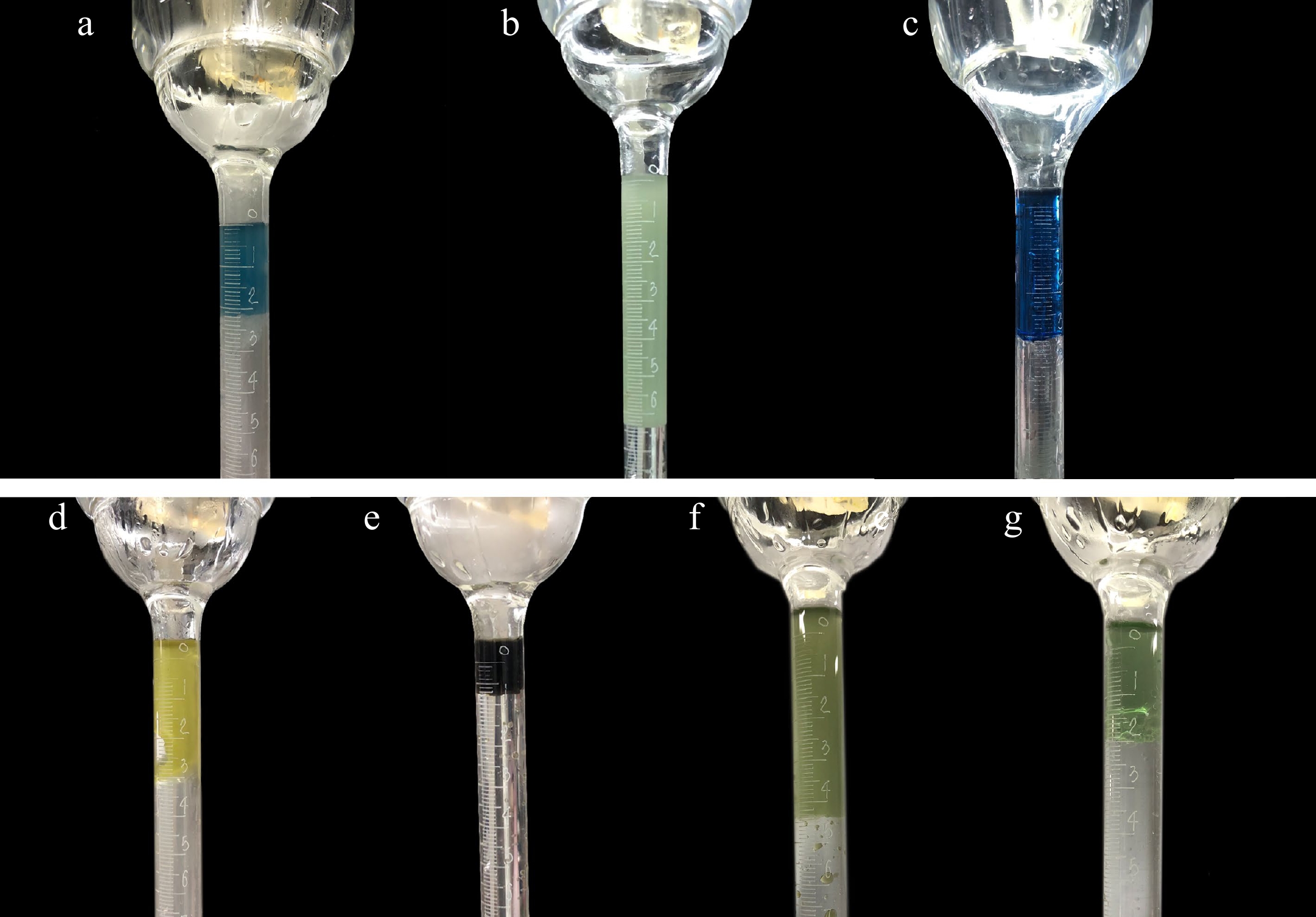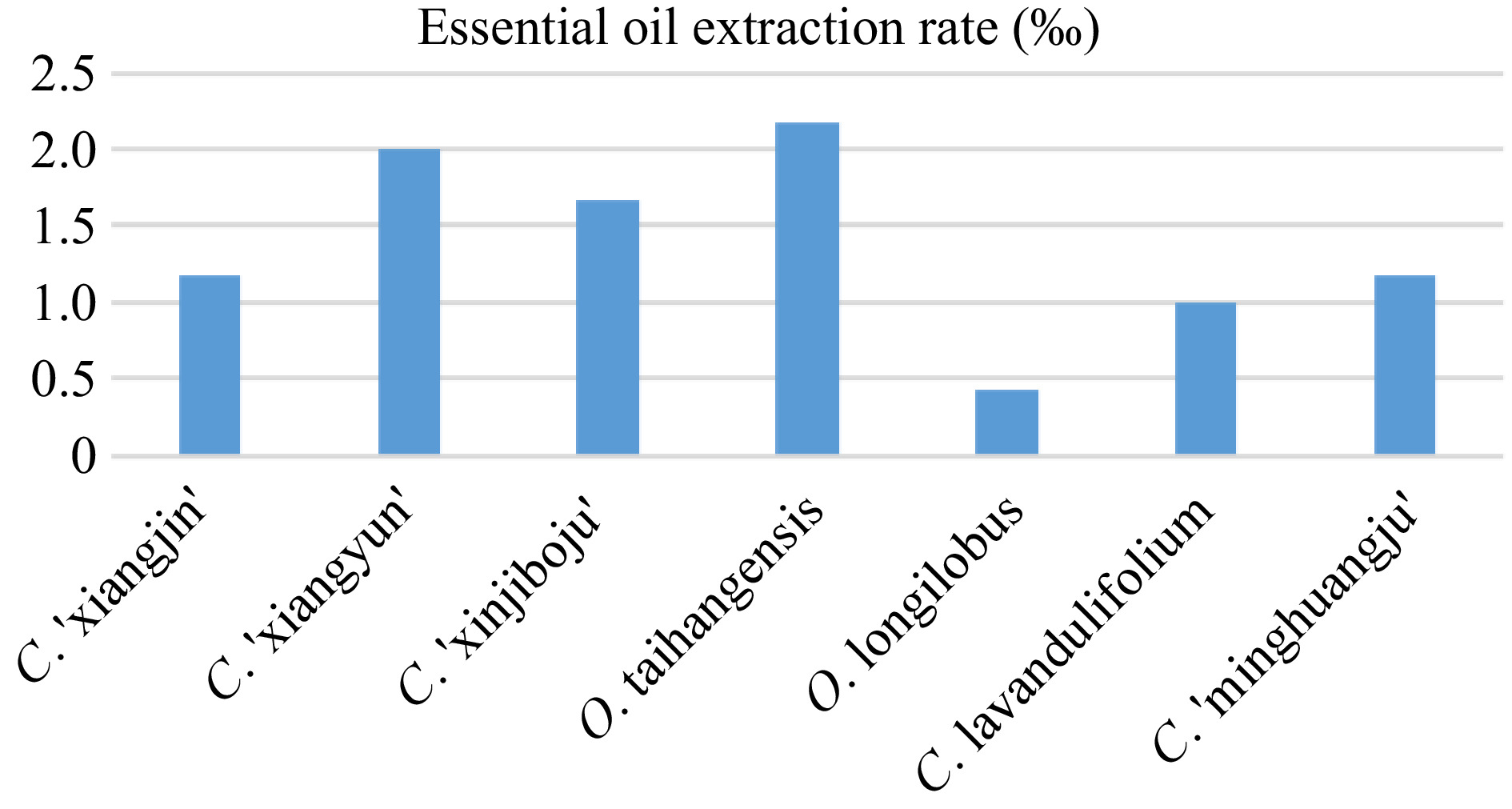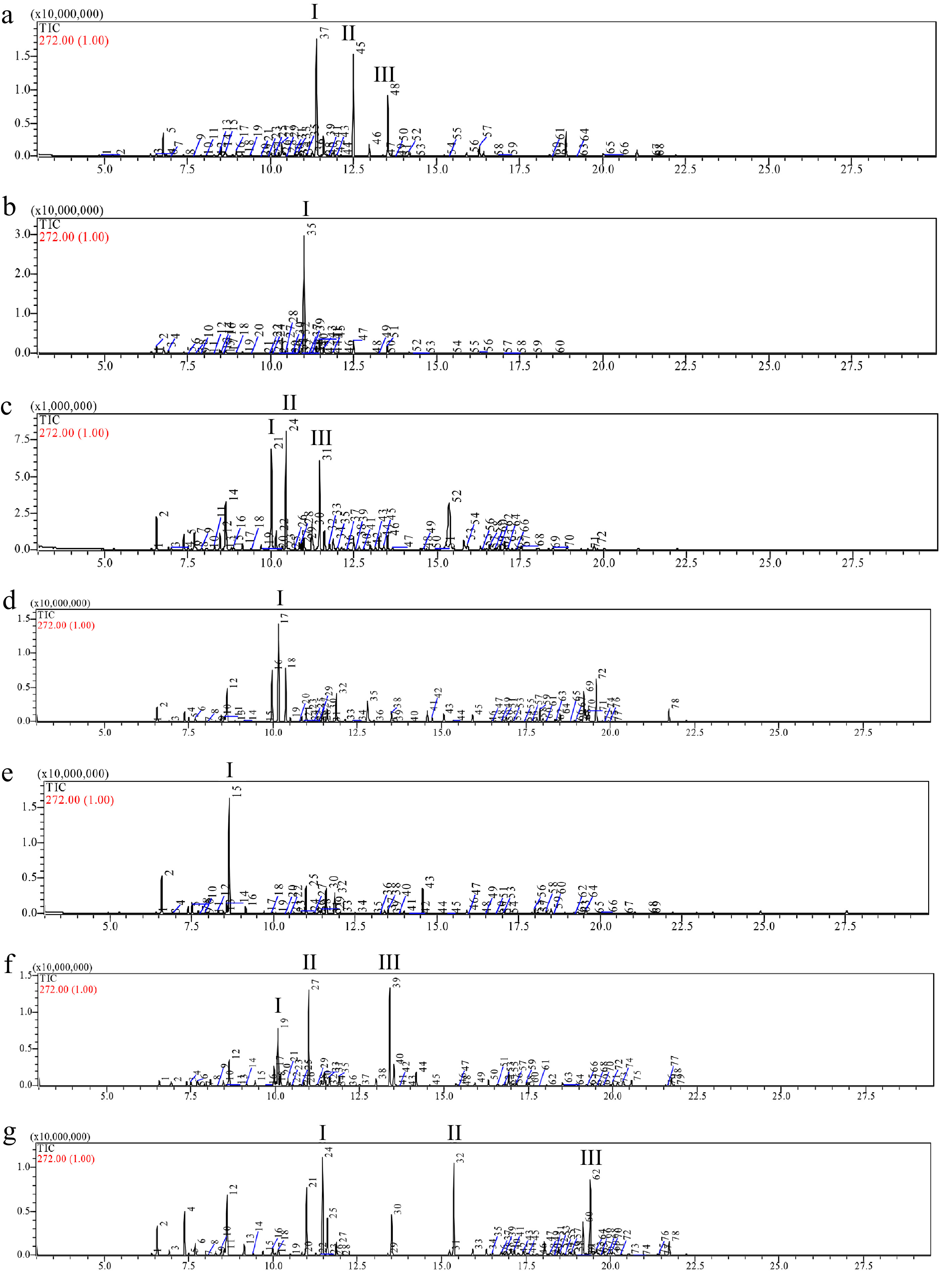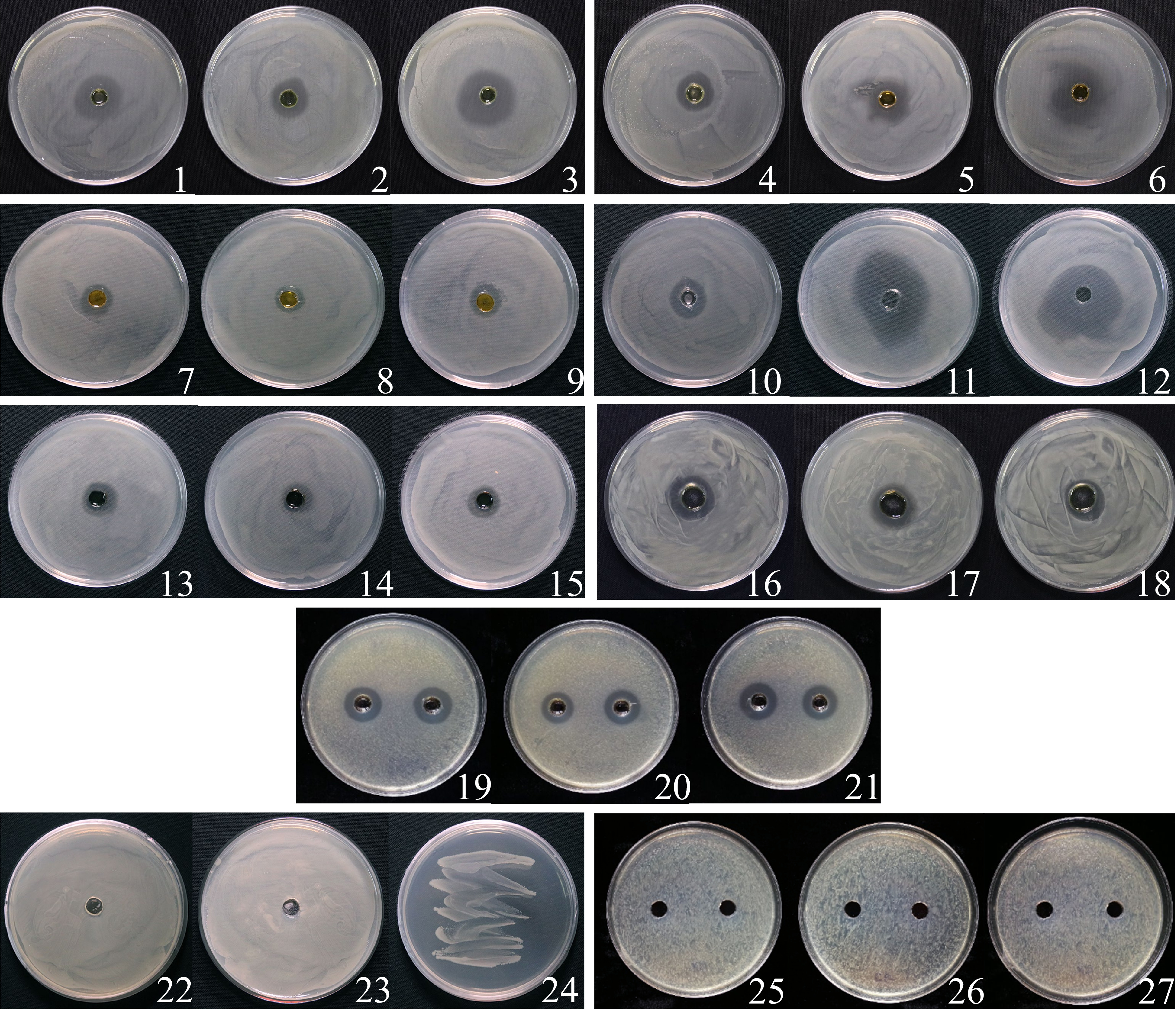-

Figure 1.
Plant material used in the extraction of essential oil (a) C. 'xiangjin' flowers and leaves; (b) C. 'xiangyun' flowers and leaves; (c) C. lavandulifolium flowers and leaves; (d) C. 'xinjiboju' flower and leaves; (e) O. taihangensis flowers and leaves; (f) O. longilobus flower and leaves; (g) C. 'minghuangju' flower and leaves.
-

Figure 2.
Appearance of the essential oils extracted from the seven examined materials. (a) C. 'xiangyun'; (b) O. taihangensis; (c) C. 'minghuangju'; (d) C. 'xiangjin'; (e) O. longilobus; (f) C. 'xinjiboju'; (g) C. lavandulifolium.
-

Figure 3.
Extraction rate of various essential oils.
-

Figure 4.
Ion flow diagram of essential oil of 7 plant materials. (a) Ion current diagram of the C. 'xiangjin' essential oil. I: Bicyclo[3.1.0]hex-3-en-2-one, 4-methyl-1-(1-methylethyl)-; II: Bicyclo[3.1.1]hept-2-en-4-ol, 2,6,6-trimethyl-, acetate; III: Thymol. (b) Ion current diagram of the C. 'xiangyun' essential oil. I: Bicyclo[2.2.1]heptan-2-one, 1,7,7-trimethyl-, (1R)-. (c) Ion current diagram of the C. 'xinjiboju' essential oil. I: Bicyclo(3.3.1)non-2-ene; II: Bicyclo[3.1.1]hept-2-en-6-one, 2,7,7-trimethyl-; III: Bicyclo[2.2.1]heptan-2-ol, 1,7,7-trimethyl-, (1S-endo)-. (d) Ion current diagram of the O. taihangensis essential oil. I: Bicyclo[3.1.0]hexan-3-one, 4-methyl-1-(1-methylethyl)-, [1S-(1.alpha.,4.beta.,5.alpha.)]-. (e) Ion current diagram of the O. longilobus essential oil. I: Eucalyptol. (f) Ion current diagram of the C. lavandulifolium essential oil. I: Eucalyptol; II: 2H-Pyran-3(4H)-one, 6-ethenyldihydro-2,2,6-trimethyl-; III: Bicyclo[2.2.1]heptan-2-one, 1,7,7-trimethyl-, (1R)-. (g) Ion current diagram of the C. 'minghuangju' essential oil. I: Bicyclo[2.2.1]heptan-2-ol, 1,7,7-trimethyl-, (1S-endo)-; II: Cyclohexane, 1-ethenyl-1-methyl-2,4-bis(1-methylethenyl)-, [1S-(1.alpha.,2.beta.,4.beta.)]-; III: Agarospirol.
-

Figure 5.
Comparison of the essential oil components. (a) C. 'xiangjin', C. 'xiangyun', and C. lavandulifolium essential oil comparison group; (b) C. 'minghuangju', C. lavandulifolium, and C. 'xinjiboju' essential oil comparison group; (c) O. taihangensis and O. longilobus essential oil comparison group.
-

Figure 6.
Antibacterial effects of the essential oils. 1–3: C. 'xiangyun' essential oil; 4–6: C. 'xinjiboju' essential oil; 7–9: C. 'xiangjin' essential oil; 10–12: O. taihangensis essential oil; 13–15: O. longilobus essential oil; 16–18: C. 'minghuangju' essential oil; 19–21: C. lavandulifolium essential oil; 22–24: E. coli DH5α control; 25–27: P. carotovorum control.
-
Essential oil type name Bacteriostatic
ring width (mm)The average
value (mm)C. 'xiangjin' essential oil 3.25 2.25 3 2.8 ± 0.55 C. 'xiangyun' essential oil 10 4.25 8 7.42 ± 3.17 C. 'xinjiboju' essential oil 3.25 4.25 11 6.17 ± 4.84 O. taihangensis essential oil 3.45 14 15 11.15 ± 7.7 O. longilobus essential oil 2.35 2.15 2 2.17 ± 0.18 C. 'minghuangju' essential oil 2.55 2.25 3 2.6 ± 0.4 C. lavandulifolium essential oil 4.25 3.75 4.50 4.17 ± 0.52 Table 1.
Antibacterial effects of seven essential oils.
Figures
(6)
Tables
(1)